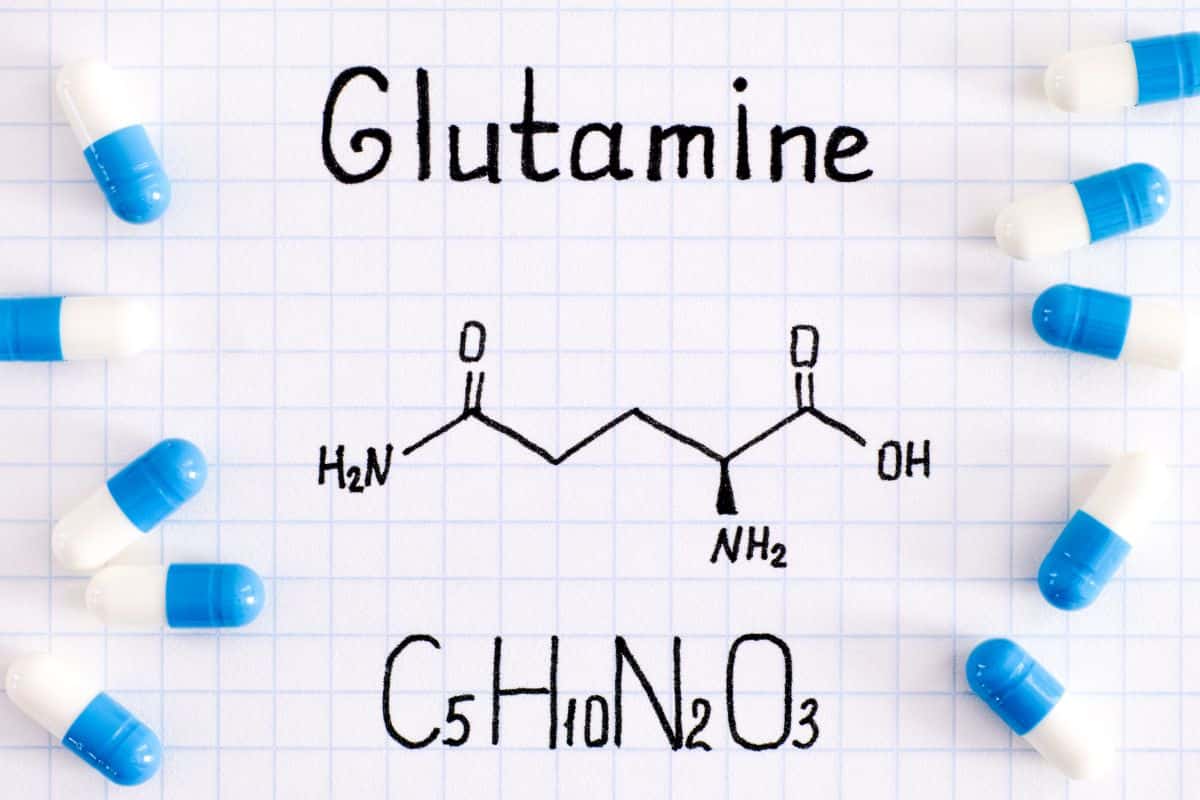Welcome to the world of fitness! If you're reading this, you've already taken the first, crucial step towards a stronger, healthier you. Building muscle transcends aesthetics—it's about enhancing your physical health and mental well-being. It's about gaining the confidence that comes from knowing you're at your best.
For beginners, muscle building can seem daunting. There's a wealth of information out there, and it can be challenging to know where to start. But don't worry - we're here to guide you through every step of your journey. This guide, designed specifically for beginners, provides all the information you need to embark on a safe and effective muscle-building journey.
In this article, we'll cover everything from understanding how muscles grow, to setting achievable fitness goals, to the role of nutrition in muscle building. We'll introduce you to basic exercises and help you create a balanced workout routine. We'll also discuss the importance of rest and recovery, and give you tips for staying motivated.
Remember, every fitness journey is unique—what works for one person might not work for another. But with patience, consistency, and the right approach, you can achieve your muscle-building goals. So, let's get started - it's time to start strong and build the body you've always wanted.
Understanding Muscle Building

Before we dive into the practical steps of building muscle, it's important to understand the science behind it. Muscle growth, also known as hypertrophy, is a process that occurs when your muscle fibres experience damage or injury from intense physical activity, such as lifting weights. Your body repairs these damaged fibres by fusing them together, which increases their mass and size. This is how muscles grow.
There are three key factors that contribute to muscle growth: exercise, nutrition, and rest. Let's briefly touch on each of these:
- Exercise: When you engage in resistance or strength training exercises, you cause microscopic damage to your muscle fibres. This sounds bad, but it's actually a good thing - it's this damage that triggers the muscle repair process and leads to muscle growth.
- Nutrition: Your body needs fuel to repair and build muscles. Protein is particularly important because it provides the building blocks, known as amino acids, that your body uses to repair and build muscle tissue. But it's not just about protein - you also need a balanced diet that includes carbohydrates for energy, and healthy fats for overall health.
- Rest: This is often the most overlooked aspect of muscle building, but it's just as important as exercise and nutrition. When you rest, your body gets to work repairing and building your muscles. Without adequate rest, you won't see the results you're working so hard for.
In the following sections, we'll delve deeper into each of these factors and provide practical advice on how to optimise them for muscle growth. But remember, building muscle is about more than just lifting weights. It's a holistic process that involves your entire lifestyle.
Getting Started: Setting Goals

Embarking on your muscle-building journey begins with setting clear, achievable goals. Having a specific target in mind gives you something to strive for and helps keep you motivated. But not all goals are created equal. To set yourself up for success, your goals should be SMART: Specific, Measurable, Achievable, Relevant, and Time-bound.
- Specific: Rather than setting a vague goal like "I want to get stronger," aim for something more specific, such as "I want to be able to bench press 100 kgs."
- Measurable: Make sure your goal is quantifiable. This could be a certain amount of weight you want to lift, a specific number of reps you want to achieve, or a particular body measurement you're aiming for.
- Achievable: While it's great to aim high, it's also important to be realistic. If you're just starting out, you're not going to look like a bodybuilder in a few weeks. Set goals that challenge you but are still within your reach.
- Relevant: Your goals should be relevant to your overall fitness objectives. If your main aim is to build muscle, setting a goal to run a marathon might not be the most relevant.
- Time-bound: Finally, set a deadline for your goal. This creates a sense of urgency and can help keep you motivated. But remember, be realistic; muscle building takes time.
Once you've set your goals, write them down and place them where you'll see them regularly. This will serve as a constant reminder of what you're working towards. And remember, it's okay to adjust your goals as you progress. Fitness is a journey, not a destination.
Nutrition for Muscle Building

When it comes to building muscle, what you eat is just as important as how you exercise. Your body needs the right nutrients to repair and build muscle tissue, and to fuel your workouts. Here's what you need to know:
- Protein: Protein is crucial for muscle growth. It provides the amino acids that your body uses to repair and build muscle tissue. Aim to include a source of protein in every meal. Good sources include lean meats, fish, eggs, dairy products, and plant-based proteins like beans and lentils. If you're struggling to get enough protein through your diet, you might consider a protein supplement.
- Carbohydrates: Carbs are your body's main source of energy. They fuel your workouts and help your body recover afterwards. Try to choose complex carbs like whole grains, fruits, and vegetables, which provide sustained energy and are packed with other essential nutrients.
- Fats: Don't shy away from fats - they're essential for overall health and can actually support muscle growth. Focus on healthy fats like those found in avocados, nuts, seeds, and oily fish.
- Hydration: Staying hydrated is crucial for overall health and can also support your muscle-building efforts. Water helps transport nutrients to your muscles and can help you perform better during your workouts. Aim to drink plenty of water throughout the day, and make sure to hydrate before, during, and after your workouts.
Remember, nutritional needs vary from person to person—what works for one may not work for another. It's worth considering consulting with a dietitian or nutritionist who can provide personalised advice based on your specific needs and goals.
Exercise Basics

Now that we've covered the importance of setting goals and nutrition, let's move on to the heart of muscle building: exercise. Specifically, we'll be focusing on resistance and strength training exercises, which are key for muscle growth.
- Resistance Training: Resistance training involves working against a force to build muscle. This force can come from your body weight (like in push-ups or squats), or from external weights (like in dumbbell curls or barbell squats). As a beginner, it's a good idea to start with bodyweight exercises to build a foundation of strength and learn proper form.
- Strength Training: Strength training is a type of resistance training that involves using weights to improve muscle strength and endurance. Once you're comfortable with bodyweight exercises, you can start incorporating strength training into your routine.
Here are some basic exercises for major muscle groups that you can start with:
- Chest: Push-ups, bench press
- Back: Pull-ups, bent-over rows
- Shoulders: Overhead press, lateral raises
- Arms: Bicep curls, tricep dips
- Legs: Squats, lunges
- Core: Planks, sit-ups
Remember, maintaining proper form is the most crucial aspect of any exercise. Performing exercises with incorrect form can lead to injuries and hinder your progress. It's better to do fewer reps with correct form than more reps with poor form. If you're unsure about how to perform an exercise, consider hiring a personal trainer or seeking advice from a fitness professional.
Creating a Workout Routine

Now that you're familiar with the basic exercises, it's time to put them together into a workout routine. A well-structured routine is key to ensuring you're working all your muscle groups evenly and giving them enough time to rest and grow. Here's how to create one:
- Balance: Aim to include exercises for all major muscle groups in your routine. This helps ensure balanced muscle growth and reduces the risk of injury. A common approach is to split your routine into 'push' days (working muscles used for pushing, like chest, shoulders, and triceps), 'pull' days (working muscles used for pulling, like back and biceps), and 'legs' days.
- Frequency: As a beginner, aim for 2-3 strength training sessions per week. This gives your muscles enough time to rest and grow between workouts. As you get more experienced, you can increase this to 3-4 sessions per week.
- Progression: Start with weights that you can lift for 8-12 reps with good form.
- Once you can comfortably do more than 12 reps, it's time to increase the weight. This principle, known as progressive overload, is key to muscle growth.
- Consistency: Consistency is key in muscle building. Try to stick to your routine as closely as possible and make it a regular part of your schedule. Remember, it's better to do shorter, more frequent workouts than longer, less frequent ones.
Remember, bodies respond differently to exercise—it's important to listen to your body and adjust your routine as needed. If you're feeling overly tired or experiencing persistent muscle soreness, it might be a sign that you're overdoing it and need more rest.
Rest and Recovery

While it might seem like muscle growth happens in the gym, it's actually during rest that your muscles repair and grow. That's why rest and recovery are just as important as your workouts. Here's what you need to know:
- Rest Days: Aim to have at least one full rest day between strength training sessions for the same muscle group. This gives your muscles time to repair and grow. On your rest days, avoid strenuous activity and focus on gentle movement like walking or stretching.
- Sleep: Sleep is crucial for muscle recovery. During sleep, your body produces growth hormone, which helps repair and build muscles. Aim for 7-9 hours of quality sleep per night.
- Active Recovery: Active recovery involves light physical activity on your rest days. This can help promote blood flow to your muscles, aiding in recovery. Examples of active recovery activities include light cardio, stretching, or yoga.
- Listen to Your Body: If you're feeling overly tired, experiencing persistent muscle soreness, or noticing a decrease in performance, these could be signs that you're not getting enough rest. Listen to your body and give it the rest it needs.
Remember, muscle building is more of a marathon than a sprint. Pushing yourself too hard without adequate rest can lead to injuries and hinder your progress. So make sure to prioritise rest and recovery as much as your workouts.
Staying Motivated

Building muscle is a journey, and like any journey, there will be ups and downs. Staying motivated can sometimes be a challenge, especially when progress seems slow. But remember, every step you take, no matter how small, brings you closer to your goal. Here are some tips to help keep your motivation high:
- Track Your Progress: Keep a record of your workouts, including the exercises you do, the weights you lift, and the number of reps and sets. Over time, you'll be able to see how much you've improved, which can be a great motivator.
- Celebrate Your Achievements: Reached a new personal best? Managed an extra rep? These are achievements worth celebrating! Recognising your progress can help keep your motivation high.
- Find a Workout Buddy: Working out with a friend can make your workouts more enjoyable and give you a friendly competition. Plus, they can provide support and encouragement when you need it.
- Mix It Up: Doing the same workout over and over can get boring. Keep things interesting by trying new exercises or changing up your routine every few weeks.
- Stay Positive: There will be days when you don't feel like working out, or when you feel like you're not making progress. It's important to stay positive and remember why you started this journey in the first place. You're stronger than you think, and you're capable of achieving your goals.
Remember, building muscle takes time and patience. Don't be discouraged if you don't see immediate results. Stay consistent, keep working hard, and the results will come.
Conclusion
Congratulations on taking the first steps on your muscle-building journey. Remember, building muscle is about more than just lifting weights - it's a holistic process that involves your entire lifestyle. From setting SMART fitness goals, to fuelling your body with the right nutrients, to balancing exercise with adequate rest, every aspect plays a crucial role in your success.
In this guide, we've covered the basics of muscle building for beginners. We've discussed the science of muscle growth, the importance of nutrition, the basics of resistance and strength training, how to create a balanced workout routine, the role of rest and recovery, and tips for staying motivated.
But remember, this is just the beginning. As you progress, you'll continue to learn and grow, and your routine will evolve with you. Stay patient, stay consistent, and most importantly, enjoy the journey.











